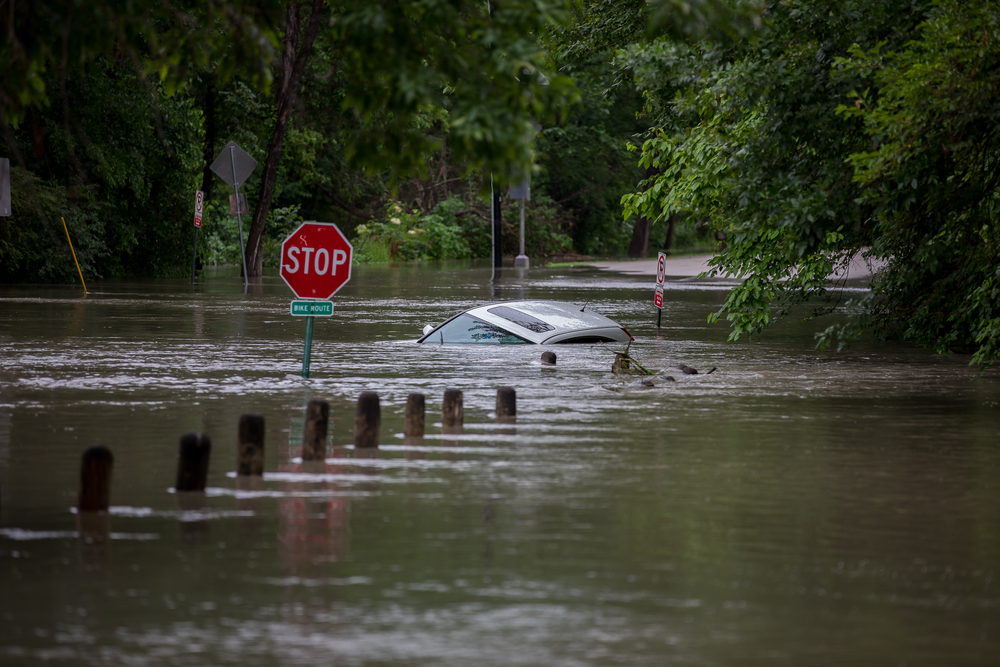Back to Basics is a weekly feature that highlights important but possibly overlooked information that any EHS professional should know. This week, we examine the essential steps for safely responding to natural disasters.
Severe weather emergencies and other natural disasters can strike any workplace or home, often without warning. In the United States alone, there are an average of 15 weather and climate disasters each year. If you’re not adequately prepared to respond to such events, the potential for injuries and even death is heightened.
However, when emergency responses have been anticipated, and you are ready to deal effectively with the most challenging situations, the chances are excellent that you can avoid a catastrophic situation.
What are the most common natural disasters?
The most common natural disasters are the following:
- Tornadoes
- Floods
- Wildfires
- Hurricanes
- Earthquakes
What responsive measures can you take?
The first steps in responding to a natural disaster should be specified in your facility’s emergency action plan (EAP), as required by the Occupational Safety and Health Administration (OSHA). The required contents of an EAP are outlined in the OSHA regulations at 29 Code of Federal Regulations (CFR) 1910.38. The EAP will include other procedures that are relevant to your business operations. Review your EAP and become familiar with it. Here are additional measures you can take in response to the most common natural disasters:
Tornado
When a warning is issued by sirens or other means, seek inside shelter in the following:
- Small interior rooms on the lowest floor without windows;
- Hallways on the lowest floor away from doors and windows; or
- Rooms constructed with reinforced concrete, brick, or blocks with no windows.
Additional tornado response measures include:
- Staying away from outside walls and windows.
- Hiding under a heavy piece of furniture if it is available.
- Using your arms to protect your head and neck, and;
- Remaining sheltered in place until the tornado threat is announced to be over.
Flood
If indoors, be ready to evacuate as directed by the emergency coordinator and/or the designated official. Follow the recommended primary or secondary evacuation routes. If you cannot evacuate, move to a higher floor or the roof. If outdoors, you should:
- Climb to high ground and stay there.
- Avoid walking or driving through floodwater.
- If your vehicle stalls, abandon it immediately and climb to higher ground.
Wildfire
Wildfires are unplanned, uncontrolled, and unpredictable fires in natural areas of combustible vegetation, such as forests and grasses. More people are working or living in areas now at risk of wildfires than just a few years ago.
Here are steps you can take to protect yourself from a wildfire:
- Sign up for emergency alerts from your local government and listen to and follow the instructions from these authorities.
- If advised to do so, or if you feel you are in danger, evacuate quickly in accordance with your facility’s evacuation plan.
- Have a plan as to where to go and the safest way to get there.
- Bring a disaster supply kit with you. Because wildfire smoke and ash can be hazardous to your eyes, nose, throat, and lungs, your kit should also include goggles and a respirator (such as an N95) that you have been taught how to use.
- As you evacuate, be aware of and avoid hot ash, charred trees, smoldering debris, live embers, fallen power lines, and downed wires.
- If you do not evacuate, choose a room you can close off from outside air, and set up a portable air cleaner or filter in the room.
Hurricane
The nature of a hurricane provides more warning than other natural and weather disasters. First, a hurricane watch is issued, followed by a hurricane warning.
Once a hurricane warning has been issued, you should:
- Prepare to evacuate as directed by your emergency coordinator and/or the designated official.
- Leave areas that might be affected by a storm tide or stream flooding.
- During a hurricane, remain indoors and consider going to the following:
- Small interior rooms on the lowest floor without windows;
- Hallways on the lowest floor away from doors and windows; and
- Rooms constructed with reinforced concrete, brick, or blocks with no windows.
Earthquake
While earthquakes can occur anywhere without warning, areas at higher risk include Alaska, California, Hawaii, Oregon, Puerto Rico, Washington and the entire Mississippi River Valley.
Consider the following tips to protect yourself during an earthquake:
- Stay away from windows, heavy or tall equipment, shelves, or other objects that pose a threat of breaking or falling on you.
- Keep away from overhead fixtures, windows, filing cabinets, and electrical power.
- Wait until the shaking stops to evacuate the building. Use stairs, not elevators.
- Evacuate as instructed by the emergency coordinator and/or the designated official.
- If you’re outside during an earthquake, move into an empty area, if possible, and walk away from anything that could fall on you.
Bottom line
When a natural disaster strikes, it can have a devastating impact on a business. That’s why it’s important for employers to have a plan in place for responding to natural disasters and for ensuring the safety of their workforce. A well-prepared plan can help to protect employees, customers, and property while also helping to minimize the disruption to business operations.
Business and Learning Resources (BLR), a division of Simplify Compliance, LLC, is an industry-leading knowledge provider with more than 40 years of experience in human capital management, environmental, health, and safety; learning and development; and legal markets. BLR® provides innovative education solutions designed to help businesses deliver consistent training, achieve compliance, and maximize efficiencies in employee workflows, resulting in measurable performance and financial improvements.


